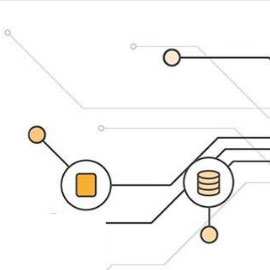Top Tips for Secure Identity Management in Cloud Computing

Cloud Computing: A Business Essential in the Virtual World
In the present age of technology and globalization, businesses work in a world that has no walls. Cloud based services help entrepreneurs penetrate new markets, build fresh customer relationships, find better business associates such as partners and vendors, and, of course, cut costs.
These days, almost everyone uses cloud computing - CRM mechanisms, file sharing, team communication, sales management, project management, data storage, the list is endless. With technology evolving so fast, people will find fresh applications for cloud computing every other day.
External identity suppliers will deliver 60% of the digital identities in an organization by 2020. This is the forecast from a report by Gartner. Just five years ago, in 2014, to be precise, this statistic was a paltry 10%. Meanwhile, many firms are reluctant to give up control of internal applications and infrastructure because of security concerns.
Even so, most of these firms agree that the merits of cloud services outweigh their potential hazards. This is the case despite a substantial percentage of them having been at the receiving end of a security breach in their cloud computing environment within the recent past.
Security Issues in Cloud Computing

Multiple cloud computing issues dot the cloud computing landscape. A 2014 study by Adallom presented some alarming facts and figures:
- 19% of users found ways to get across controls for access and identity management.
- 80% of firms had at least one ex-employee with an active SaaS account.
- Admins made up 7% of the users.
- Assigned but inactive users, called zombies, comprised 11% of the SaaS accounts.
Despite the best efforts of efficient cloud service providers, hackers are able to breach and tap into confidential data. An important reason for such break-ins is negligence by the end user. There is more to it, though. Hackers breaking through the security walls of the cloud computing environment grab headlines and make for attention drawing breaking news incidences. But, counter measures that prevent incidences of such breaches garner precious little limelight, if any at all.
Top Tips to Secure Identity Management in Cloud Computing
Identity management is among the most important issues in cloud computing, if not the most significant. Here are some tips for seamless management of identity in the cloud computing environment:
- Clearly Define Access: Technology is just a tool in your hands. How you use if defines its utility. You need to categorically define who needs to access to which resources. This is, of course, based on the nature of activities of each individual in each department / group of individuals. Everyone does not need access to everything - have appropriate filters in place.
- Hire Reputed Professionals: There is absolutely no point in saving pennies by enlisting the services of substandard professionals if their cheap security will make you lose thousands later. Within the limitations imposed by your budget, hire the best professionals for secure identity management in cloud computing.
- Train Yourself and Your Staff: Using a new system can be challenging at least in the initial period. Ensure that your staff is appropriately trained to handle the new security mechanism. Make training as specific as possible by identifying which employees / groups of employees require what type of knowhow. Also, give sufficient time for on-boarding.
If you have time, train yourself with all aspects and levels of the system so that you can solve any queries that your staff may have. Better still: make time.
- Multi-factor Authentication Helps: This is because hackers can easily find their way through the old system of username and password. A multi-factor authentication process significantly lowers the risk of security breaches. It is one of the most economical and also among the most effective methods of keeping hackers at bay.
- Real Time Monitoring: For early detection and action against break-ins, real time monitoring is an exceptionally useful tool. This is because you can spot abnormal activity while the hacker is still at the outskirts of your system and can thus initiate corrective actions before the breach becomes too serious.
- Formulate a Complete Off-boarding Process: Create standard operating procedures for denying access to employees who have left the firm. This has to be effected at the very moment the employee checks out of the office for the last time.
- Institute a Data Backup and Recovery Policy: Despite all that you do to secure your data systems, there will be days when hackers get the better of you. Data backup and recovery mechanisms will come in handy on such rainy and gloomy days by allowing you to recover the important data without losing time and data integrity.
Finally
Cloud computing is here to stay because of its multifaceted advantages. It will continue to surge ahead and security systems will have to evolve to keep up.







